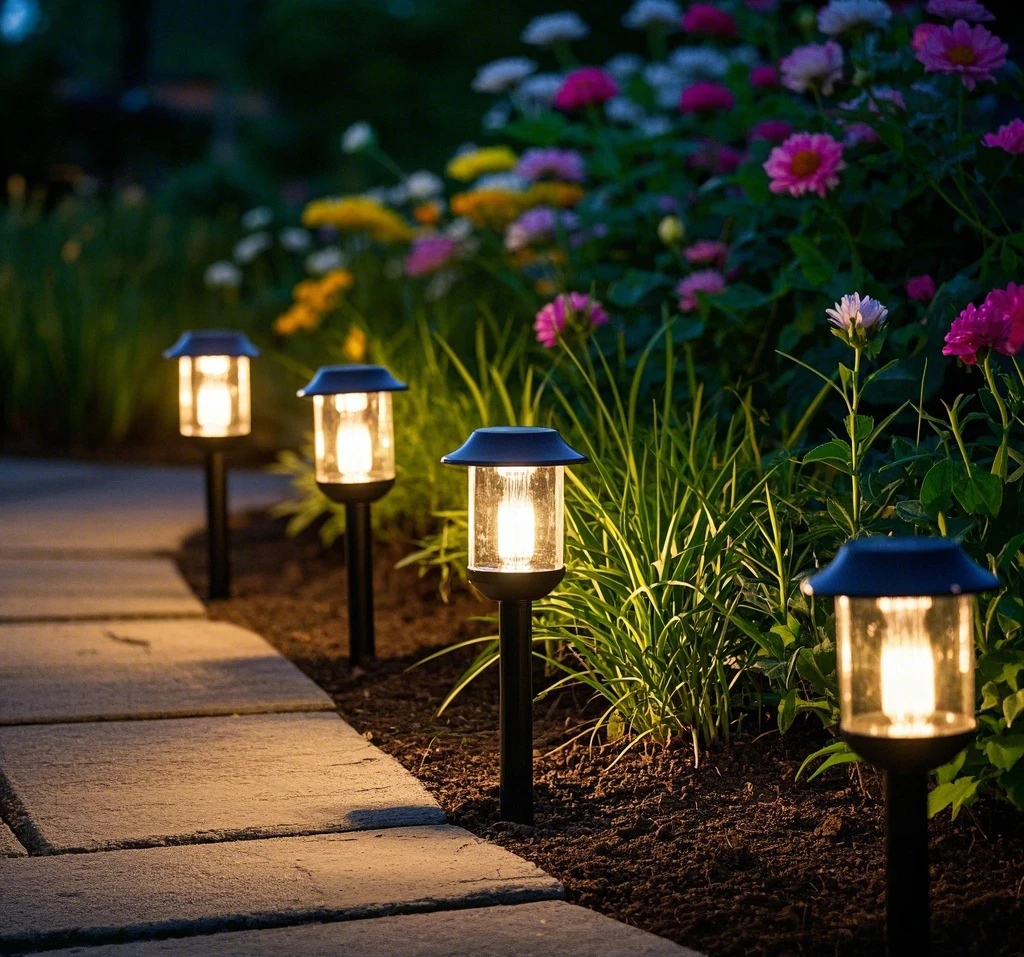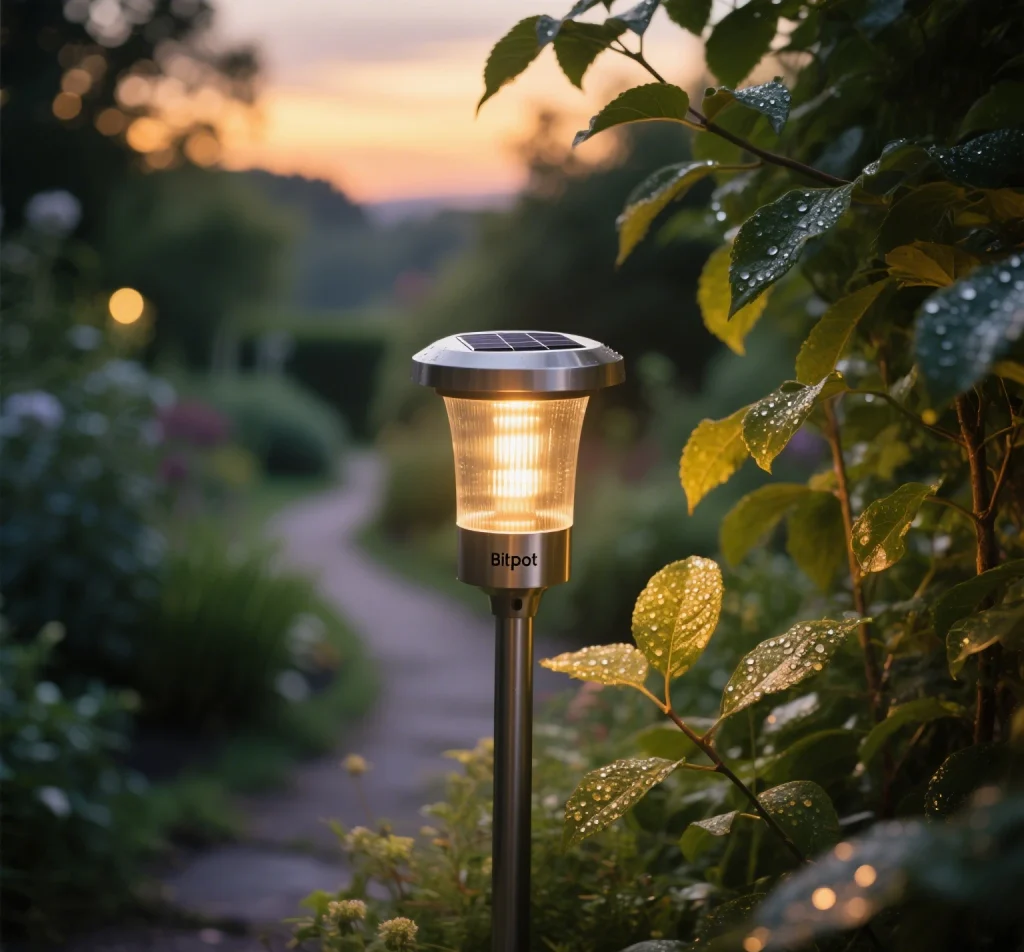Solar pathway lights are an eco-friendly and stylish way to illuminate walkways, gardens, and driveways, enhancing safety and aesthetics without increasing your electricity bill. A common question when installing these lights is: how far apart should solar pathway lights be? Proper spacing is crucial for achieving optimal solar light performance, ensuring even illumination, and maximizing the efficiency of your solar lighting system. This article explores the factors influencing spacing, provides practical guidelines, and offers tips to create a balanced and effective lighting setup.

Why Proper Spacing Matters for Solar Pathway Lights
Correct spacing of solar pathway lights ensures that your walkway is well-lit, safe, and visually appealing. Incorrect spacing can lead to dark spots, excessive brightness, or wasted energy, diminishing the effectiveness of your solar-powered lights. The ideal distance depends on several factors, including the light’s brightness, beam angle, pathway design, and intended purpose (e.g., safety, decoration, or both). By understanding these factors, you can create a cohesive and functional lighting plan.
Factors Influencing Solar Pathway Light Spacing
1. Light Brightness and Lumens
The brightness of solar pathway lights, measured in lumens, significantly affects spacing. Most solar lights for pathways produce 10-100 lumens, with higher-lumen models providing brighter and wider illumination. For example, a 10-lumen light may only illuminate a small area (1-2 feet in diameter), requiring closer spacing, while a 100-lumen light can cover 6-8 feet, allowing for wider spacing.
Guideline: As a general rule, space low-lumen (10-20 lumens) lights 4-6 feet apart, medium-lumen (20-50 lumens) lights 6-8 feet apart, and high-lumen (50-100 lumens) lights 8-12 feet apart. Check the product specifications for lumen output to guide your spacing decisions.
2. Beam Angle and Light Spread
The beam angle of a solar light determines how widely the light spreads. Narrow beam angles (e.g., 30-60 degrees) focus light in a smaller area, requiring closer spacing to avoid dark spots. Wider beam angles (e.g., 90-120 degrees) cover larger areas, allowing for greater distances between lights.
Guideline: For narrow-beam lights, reduce spacing by 1-2 feet compared to the lumen-based recommendation. For wide-beam lights, you can increase spacing slightly, but ensure overlap to maintain consistent illumination.
3. Pathway Design and Layout
The shape and layout of your pathway influence solar pathway light spacing. Straight pathways are easier to light evenly, while curved or winding paths may require closer spacing at bends to ensure adequate coverage. Additionally, wider pathways (e.g., 4-6 feet) may need lights on both sides, while narrow paths (1-2 feet) can often be lit with lights on one side.
Guideline: For straight paths, follow the lumen-based spacing (4-12 feet). For curved paths, reduce spacing by 1-2 feet at curves or corners. For wide paths, consider staggering lights on both sides to create a balanced effect, spacing them 6-10 feet apart.
4. Purpose of the Lighting
The intended purpose of your solar lighting system affects spacing. For safety-focused lighting (e.g., illuminating steps or driveways), closer spacing ensures bright, even coverage to prevent tripping hazards. For decorative purposes (e.g., accentuating garden borders), wider spacing can create a softer, more ambient effect.
Guideline: For safety, space lights 4-8 feet apart to ensure bright, overlapping illumination. For decorative effects, space lights 8-12 feet apart to create a subtle glow, adjusting based on aesthetics.
5. Environmental Factors
Environmental conditions, such as shading or light pollution, can impact solar panel efficiency and light performance. Shaded areas may require closer spacing to compensate for lower solar light brightness due to reduced charging. In urban areas, artificial light from streetlights can interfere with the light-dependent resistor (LDR), affecting light activation and perceived brightness.
Guideline: In shaded areas, reduce spacing by 1-2 feet to ensure adequate illumination. In areas with light pollution, test lights at night to confirm they activate properly and adjust spacing for consistent brightness.
Recommended Spacing Guidelines for Solar Pathway Lights
Based on the factors above, here are general recommendations for solar pathway light spacing:
- Low-Lumen Lights (10-20 lumens): Space 4-6 feet apart for small pathways or decorative effects. Ideal for garden borders or subtle ambiance.
- Medium-Lumen Lights (20-50 lumens): Space 6-8 feet apart for standard walkways or driveways. Suitable for most residential applications.
- High-Lumen Lights (50-100 lumens): Space 8-12 feet apart for wide pathways or areas requiring bright illumination, such as entryways.
- Curved or Irregular Paths: Reduce spacing by 1-2 feet at bends or corners to maintain even lighting.
- Safety-Critical Areas: Use 4-6 feet spacing with high-lumen lights to ensure bright, safe illumination for steps or uneven surfaces.
Always test your setup at night to adjust spacing for optimal coverage and aesthetics. Reputable brands like Bitpott provide solar lights with clear lumen ratings and beam angle specifications, making it easier to plan your layout.
Installation Tips for Optimal Solar Pathway Light Spacing
To achieve the best results when spacing solar pathway lights, follow these installation tips:
- Plan Your Layout: Before installing, map out your pathway and mark light positions with stakes or chalk. Walk the path at night to visualize coverage and adjust as needed.
- Ensure Maximum Sunlight Exposure: Place lights where the PV panel receives 6-8 hours of direct sunlight daily to maximize solar panel efficiency. Avoid shaded areas or spots under trees.
- Clean Panels Regularly: Dust, dirt, or snow can reduce solar energy collection. Clean panels monthly with a soft cloth to maintain charging efficiency.
- Test and Adjust: After installation, test the lights at night to check for dark spots or overly bright areas. Adjust spacing or add lights as needed.
- Consider Staggered Placement: For wide pathways, stagger lights on both sides to create a balanced, visually appealing effect while ensuring even illumination.
- Use Adjustable Mounts: Some smart solar lights, like those from Bitpott, offer adjustable mounts to optimize solar panel sunlight exposure, especially in winter when sun angles are lower.

Common Mistakes to Avoid
When determining how far apart solar pathway lights should be, avoid these pitfalls:
- Over-Spacing: Placing lights too far apart can create dark spots, reducing safety and aesthetics. Always ensure light beams overlap slightly.
- Under-Spacing: Too-close spacing wastes energy and can make the pathway look overly bright or cluttered. Follow lumen-based guidelines to find the right balance.
- Ignoring Pathway Shape: Failing to adjust for curves or corners can lead to uneven lighting. Reduce spacing at bends to maintain consistency.
- Neglecting Maintenance: Dirty panels or degraded NiMH batteries can reduce solar light brightness, making spacing seem inadequate. Regular maintenance is key.
- Overlooking Light Pollution: Artificial light sources can interfere with the light-dependent resistor (LDR), causing lights to flicker or stay off. Position lights away from streetlights or porch lights.
Troubleshooting Spacing Issues
If your solar pathway lights don’t provide the desired illumination after installation, consider these troubleshooting steps:
- Check Lumen Output: Verify the lumen rating of your lights. If they’re too dim, consider upgrading to higher-lumen models or reducing spacing.
- Inspect Battery Health: A degraded NiMH battery may not hold a full charge, reducing brightness. Replace batteries every 1-2 years to maintain solar light performance.
- Test LDR Functionality: Ensure the LDR sensor is clean and not exposed to artificial light at night, which can prevent lights from turning on.
- Evaluate Sunlight Exposure: If lights are in shaded areas, relocate them or trim foliage to improve solar energy collection.
- Adjust Beam Angles: If lights have adjustable heads, angle them to optimize coverage and reduce dark spots.
Benefits of Properly Spaced Solar Pathway Lights
Correctly spaced solar pathway lights offer numerous advantages:
- Enhanced Safety: Even illumination prevents tripping hazards, making walkways and driveways safer at night.
- Improved Aesthetics: Balanced spacing creates a visually appealing glow, enhancing your outdoor space’s beauty.
- Energy Efficiency: Proper placement ensures lights charge efficiently, maximizing solar panel efficiency and reducing maintenance needs.
- Cost Savings: Solar-powered lights eliminate electricity costs, and optimal spacing prevents the need for additional lights.
When to Consider Alternative Lighting Solutions
If your pathway has unique challenges, such as heavy shading or complex layouts, solar pathway lights may not be the best solution. Consider these alternatives:
- Hybrid Solar-Electric Lights: These combine solar and low-voltage electric power, ensuring reliability in low-sunlight areas.
- Electric LED Lights: For consistent brightness in shaded or high-traffic areas, energy-efficient electric LEDs may be more practical.
- Motion-Sensor Lights: For safety-critical areas, motion-sensor solar lights can provide bright illumination only when needed, conserving battery life.
Conclusion
Determining how far apart solar pathway lights should be depends on factors like lumen output, beam angle, pathway design, and lighting purpose. By following general spacing guidelines (4-12 feet based on brightness), adjusting for curves or safety needs, and optimizing solar panel sunlight exposure, you can create a safe, attractive, and efficient solar lighting system. Regular maintenance, such as cleaning panels and replacing NiMH batteries, ensures consistent solar light performance. With careful planning and attention to detail, your solar pathway lights will illuminate your outdoor spaces beautifully and sustainably, enhancing both safety and curb appeal.


Leave a Reply